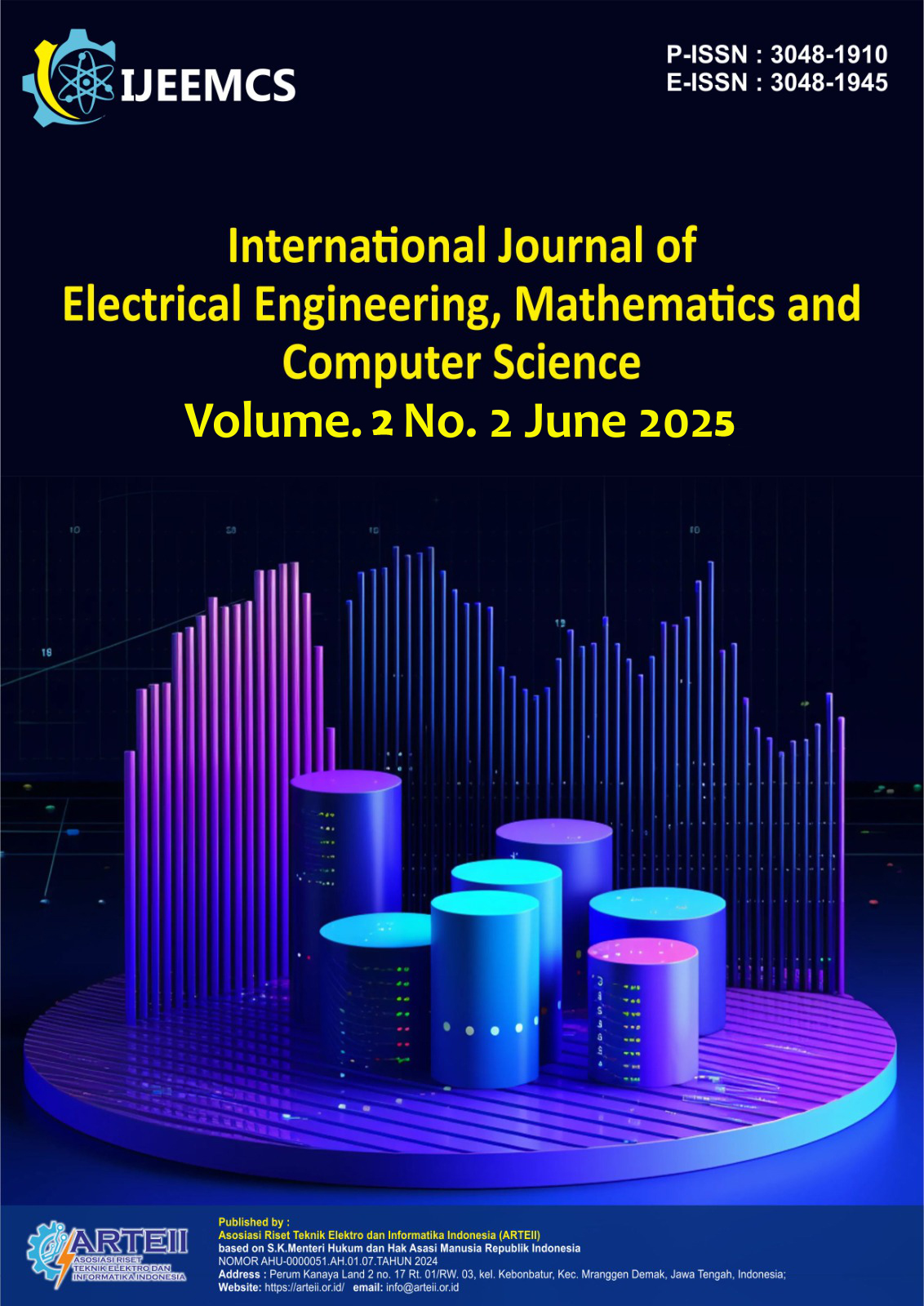Implementation of the Extreme Gradient Boosting(XGBoost) Method in the Classification of Recipients of Habitable Housing Rehabilitation in Central Aceh Regency
DOI:
https://doi.org/10.62951/ijeemcs.v2i2.268Keywords:
XGBoost, Classification, Habitable Houses, Rehabilitation, Machine LearningAbstract
In Central Aceh Regency, many households still live in uninhabitable conditions. The government is running a program to rehabilitate habitable houses, but the selection of recipients is still done manually, causing inefficiency and inconsistency. This study implements the Extreme Gradient Boosting (XGBoost) algorithm to classify aid recipients automatically and accurately. Using a machine learning approach, data is collected based on variables of structural conditions, building materials, ventilation, lighting, and sanitation. Hyperparameter tuning is performed to optimize model performance. The implementation results show that XGBoost is able to support fair, efficient, and transparent decision making in housing assistance programs.
References
F. Atmajayanti, A. Qashlim, and B. Burhanuddin, “Decision Support System for Accepting Livable Housing Assistance Using the Ahp Saw Method,” *J. Peqguruang Conf. Ser.*, vol. 3, no. 1, p. 115, 2021, doi: 10.35329/jp.v3i1.1117.
R. N. Alifah *et al.*, “Comparison of Tree Based Classification Methods for Body Mass Index Data Classification Problems,” *Indones. J. Math. Nat. Sci.*, vol. 47, no. 1, p. 2024, 2024. [Online]. Available: https://journal.unnes.ac.id/journals/JM/index
R. Oktafiani, A. Hermawan, and D. Avianto, “Max Depth Impact on Heart Disease Classification: Decision Tree and Random Forest,” *J. RESTI (Syst. Eng. Inf. Technol.)*, vol. 8, no. 1, pp. 160–168, 2024, doi: 10.29207/resti.v8i1.5574.
S. E. H. Yulianti, O. Soesanto, and Y. Sukmawaty, “Application of Extreme Gradient Boosting (XGBOOST) Method on Credit Card Customer Classification,” *J. Math. Theory Appl.*, vol. 4, no. 1, pp. 21–26, 2022, doi: 10.31605/jomta.v4i1.1792.
G. A. Shafila, “Implementation of the Extreme Gradient Boosting (XGBOOST) Method for Classification of Bioinformatics Data (Case Study: Ebola Disease, GSE 122692),” *Dspace.Uii.Ac.Id*, pp. 1–77, 2020.
A. Fadhilah, R. Ramdani, and M. F. Rizki, “Social Rehabilitation of Homeless and Beggars at the Harapan Jaya Bina Karya Social Home,” *Community Dev. J.*, vol. 5, no. 3, pp. 5115–5119, 2024.
D. Di, K. Cibadak, S. A. Nurulita, and D. Kurnia, “Journal of Praxisidealis,” vol. 01, no. 01, 2024.
T. Y. Tursilarini and T. Udiati, “The Impact of Uninhabitable Housing Assistance (RTLH) on the Social Welfare of Beneficiary Families in Bangka Regency,” *Media Inf. Penelit. Kesejaht. Sos.*, vol. 44, no. 1, pp. 1–21, 2020. [Online]. Available: https://ejournal.kemsos.go.id/index.php/mediainformasi/article/view/1973/pdf
S. Rahayu and Y. Yamasari, “Stroke Disease Classification with Support Vector Machine (SVM) Method,” *J. Informatics Comput. Sci.*, vol. 5, no. 03, pp. 440–446, 2024, doi: 10.26740/jinacs.v5n03.p440-446.
N. B. Putri and A. W. Wijayanto, “Comparative Analysis of Data Mining Classification Algorithms in Phishing Website Classification,” *Komputika J. Sist. Comput.*, vol. 11, no. 1, pp. 59–66, 2022, doi: 10.34010/komputika.v11i1.4350.
S. Ratna, “Digital Image Processing and Histogram with Python and PyCharm Text Editor,” *Technol. J. Ilm.*, vol. 11, no. 3, p. 181, 2020, doi: 10.31602/tji.v11i3.3294.
J. R. Fauzi, “Algorithms and Flowcharts in Solving a Problem Compiled by Janabadra University Yogyakarta 2020,” *J. Tech. Inform.*, no. 20330044, pp. 4–6, 2020.
ADAN Programming, “Pseudocode,” *Definitions*, 2020, doi: 10.32388/tf77dy.
M. N. Syarif, N. Pambudiyatno, W. Utomo, J. I. Jemur Andayani No, and K. Siwalankerto, “Design of Attendance System and Recapitulation of OJT Activity Journal Using Web-Based Visual Studio Code at Airnav, Matsc Branch,” *Pros. Seminar. Inov. Technol. Aviation Year*, p. 2023, 2023.
F. R. Valerian *et al.*, “Classification of obesity levels using the GBM method and confusion matrix,” vol. 9, no. 2, pp. 2242–2249, 2025.
Downloads
Published
How to Cite
Issue
Section
License
Copyright (c) 2025 International Journal of Electrical Engineering, Mathematics and Computer Science

This work is licensed under a Creative Commons Attribution-ShareAlike 4.0 International License.





